The Foreign Intimacies exhibition by Mel Rosas is at the Elaine L. Jacob Gallery on the Wayne State University campus.
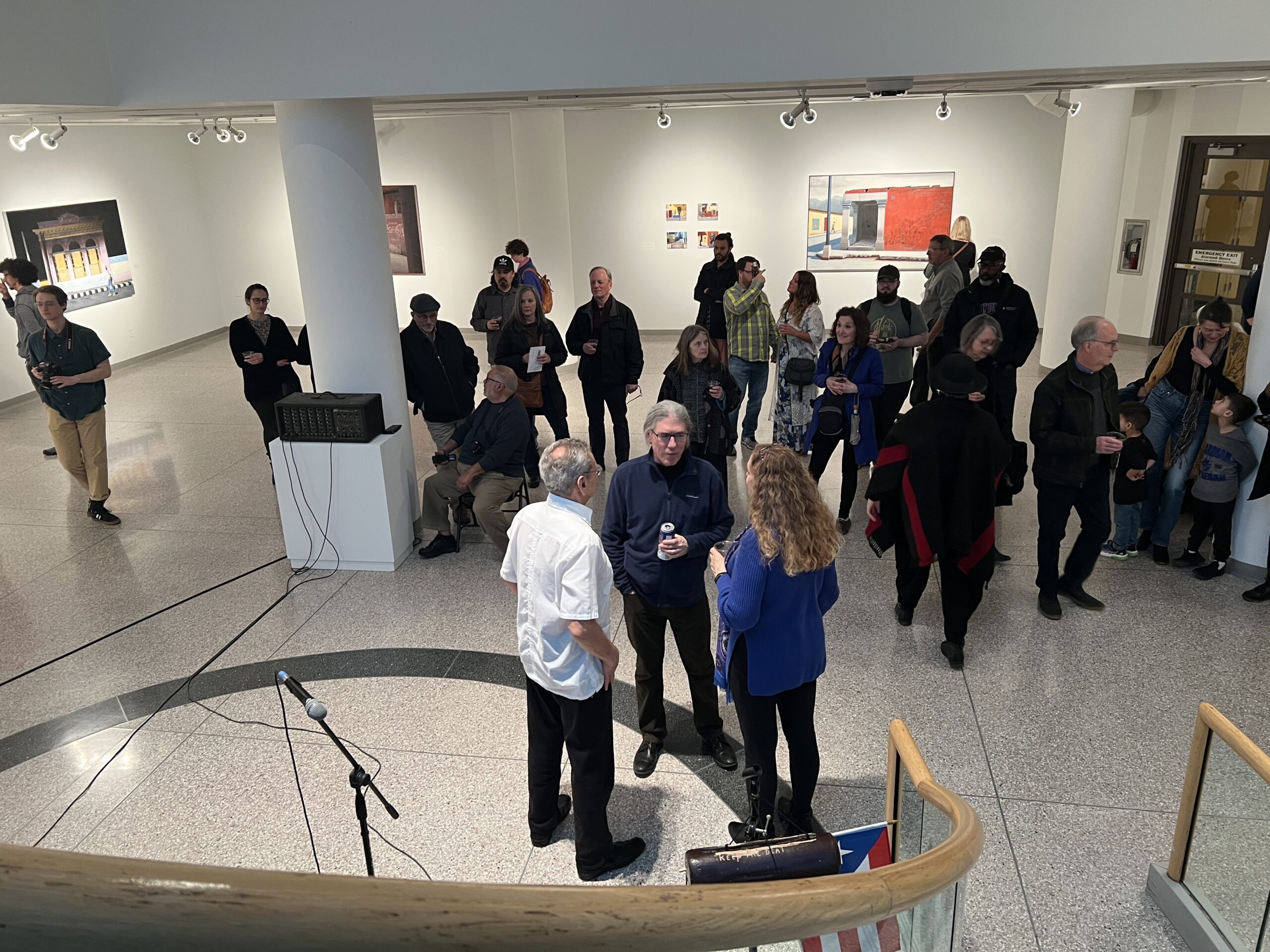
An installation image of Mel Rosas’ “Foreign Intimacies” at the Elaine L. Jacob Gallery. Image courtesy of DAR.
While teaching in Canada decades ago, Wayne State professor emeritus Mel Rosas found himself struggling to stay awake just before dark as he was driving across Saskatchewan. But he snapped right to when he came upon the obstacle in the middle of the road.
Rosas, a painter whose show Foreign Intimacies is at the Elaine L. Jacob Gallery on Wayne’s campus through June 2, initially assumed the creature was a cat. But as he leaned on the brakes, he realized the animal was far too big. It was a mountain lion.
That twilight encounter, he said, was both “surreal and other-worldly.” Remarkably, it’s an experience he’d repeat, in much the same fashion, years later while driving through his father’s homeland, Panama. Again, the first glimpse down the road suggested a cat. But on closer examination, it turned out to be something entirely different and far more spiritual and thrilling – a black panther.

Mel Rosas, The Day of the Panther, Oil on panel, 48 x 48 inches, 2015. All painting images courtesy of Mel Rosas.
These brushes with mythic felines materialize in a 2015 work, The Day of the Panther, that’s well worth seeking out if you go to the exhibition. Here we find ourselves on a nameless street well south of the border. Centered dead ahead, right in our line of sight, is the panther — a black silhouette against a rich green background – who’s carefully making his way across a dirt road. We’re looking through a doorway in a wall, a device Rosas uses frequently and to great effect — an opening that ushers us from this stained and peeling world to a more lyrical place. On our side of this threshold, all is every day and a little grimy. Contrast that with the verdant countryside on the other side, where the cat’s pacing and the image is nothing short of transporting.
Rosas’ work straddles the line between a waking dream state, on the one hand, and soiled reality on the other, albeit rendered in the rich hues of the Caribbean. It would be easy, given the material, for the artist to romanticize – or worse yet, exoticize — these urban vignettes. But Rosas works in unsentimental realism, at least when he’s sketching out the walls and streets that constitute the foreground, or scrim, of these compositions. The colors may be lush, but the walls are pock-marked and streaked. There is, of course, an undeniable pathos to decay, but the real romance here lies in the distant vistas espied through windows, doorways, and apertures of all kinds. It’s as if the work operates on two levels – a flat picture plane facing the viewer and portals that give way to hopeful worlds beyond.
The paintings in Foreign Intimacies were mostly worked from drawings or photographs Rosas has taken on his travels over 40 years through Panama, Guatemala, Costa Rica, Peru, Brazil, and Cuba.
At first, the colorful streetscapes in Foreign Intimacies might look to be empty, but that’s not the case. Many sport an individual, but never more than one — and that singularity, as with Edward Hopper’s under-populated canvases, makes the relative emptiness echo all the louder. Rosas, who studied art at Drake University and Philadelphia’s Tyler School of Art, attributes this in part to his own nocturnal storylines: “When I dream,” he said, “I find myself alone, walking around a semi-familiar environment.”
Which, in a way resembles Rosas’ take on being a foreigner abroad in Central and South America. As a “half-gringo,” he said, he still feels like an outsider looking in, never mind his family connections in Panama. Indeed, as he notes, the show’s title, Foreign Intimacies, underlines this paradox. “These experiences were foreign,” he said, “but strangely familiar.”
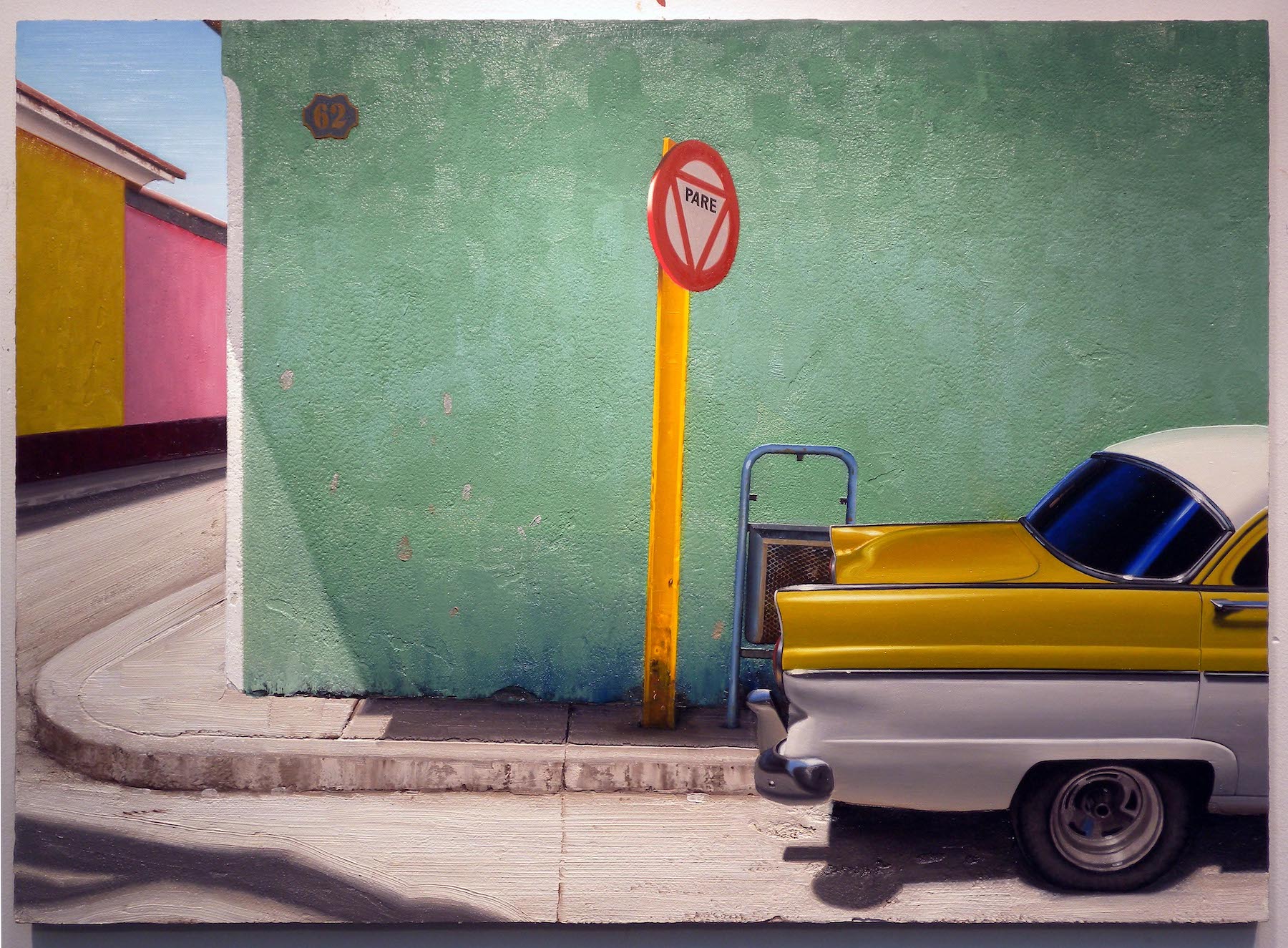
Mel Rosas, Pare, Oil on panel, 30 x 42 inches, 2012.
A number of the paintings on display clearly come from Cuba – a fact given away by the awesomely preserved American cars from the 1940s to the early 60s that figure prominently in them. One good example is Pare (Give way), a particularly handsome color study starring what looks to be the back half of an early-Sixties, two-tone Ford Falcon painted a gleaming mustard yellow with a white roof. At the far end of the frame are two walls, one a matching mustard, juxtaposed with a neighbor in exuberant pink. Uniting the whole composition is a large wall in the middle, rendered in mottled shades of soft green. Mustard yellow, hot pink, sea green, and back to mustard — it’s a gorgeous, balanced composition.
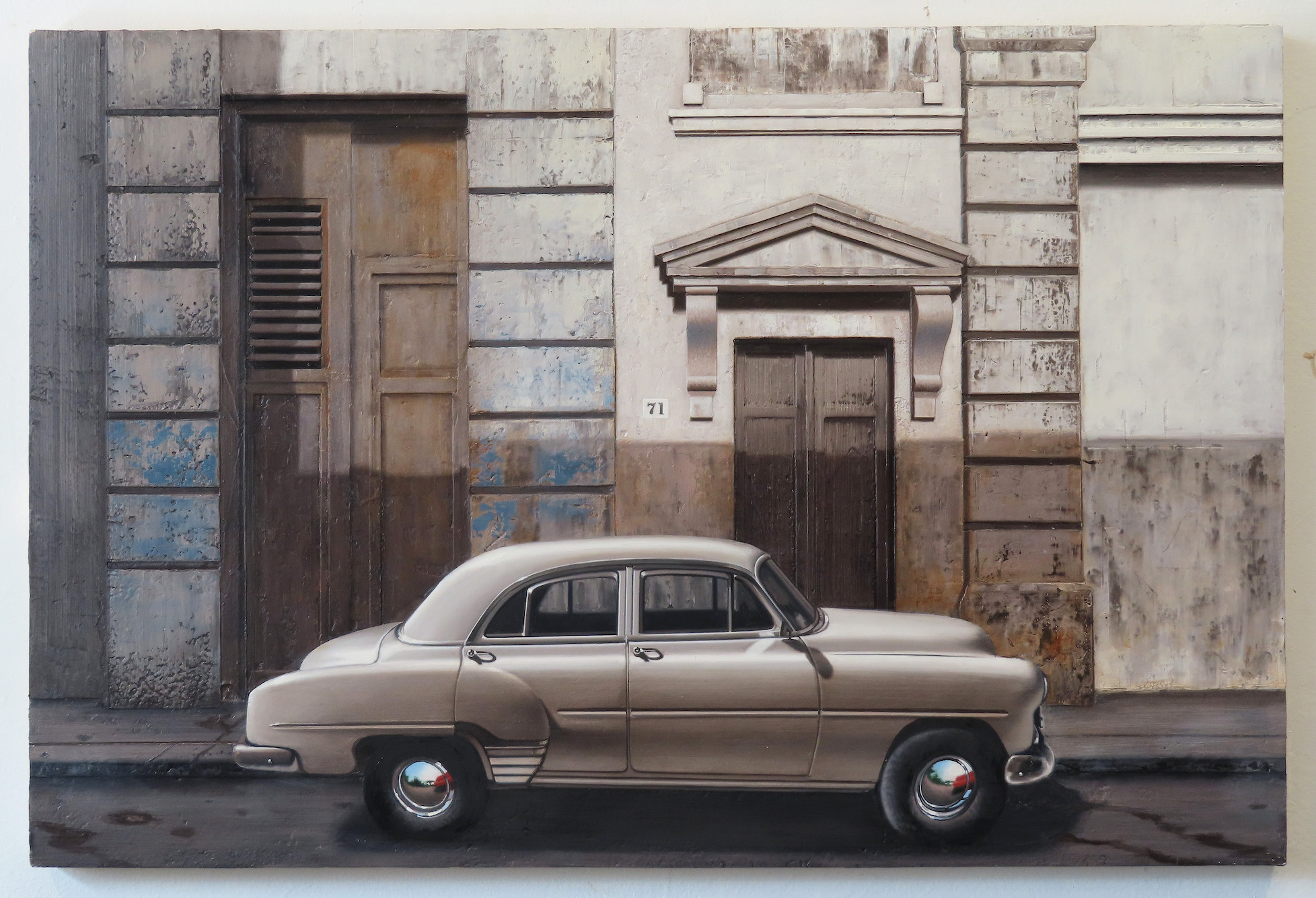
Mel Rosas, Memory, and Artifact, Oil on panel, 24 x 36 inches, 202
The 2021 Memory and Artifact looks to be from Cuba as well, with its mint-condition four-door from the Forties. And once again, it’s a color study of sorts, although this time in monochromatic shades of brown and dark beige. The only exceptions are a few splotches of light blue on walls framing a neo-classical doorway, which look as if posters have been ripped down. For its part, the automobile is pristine, the architecture old and distressed.
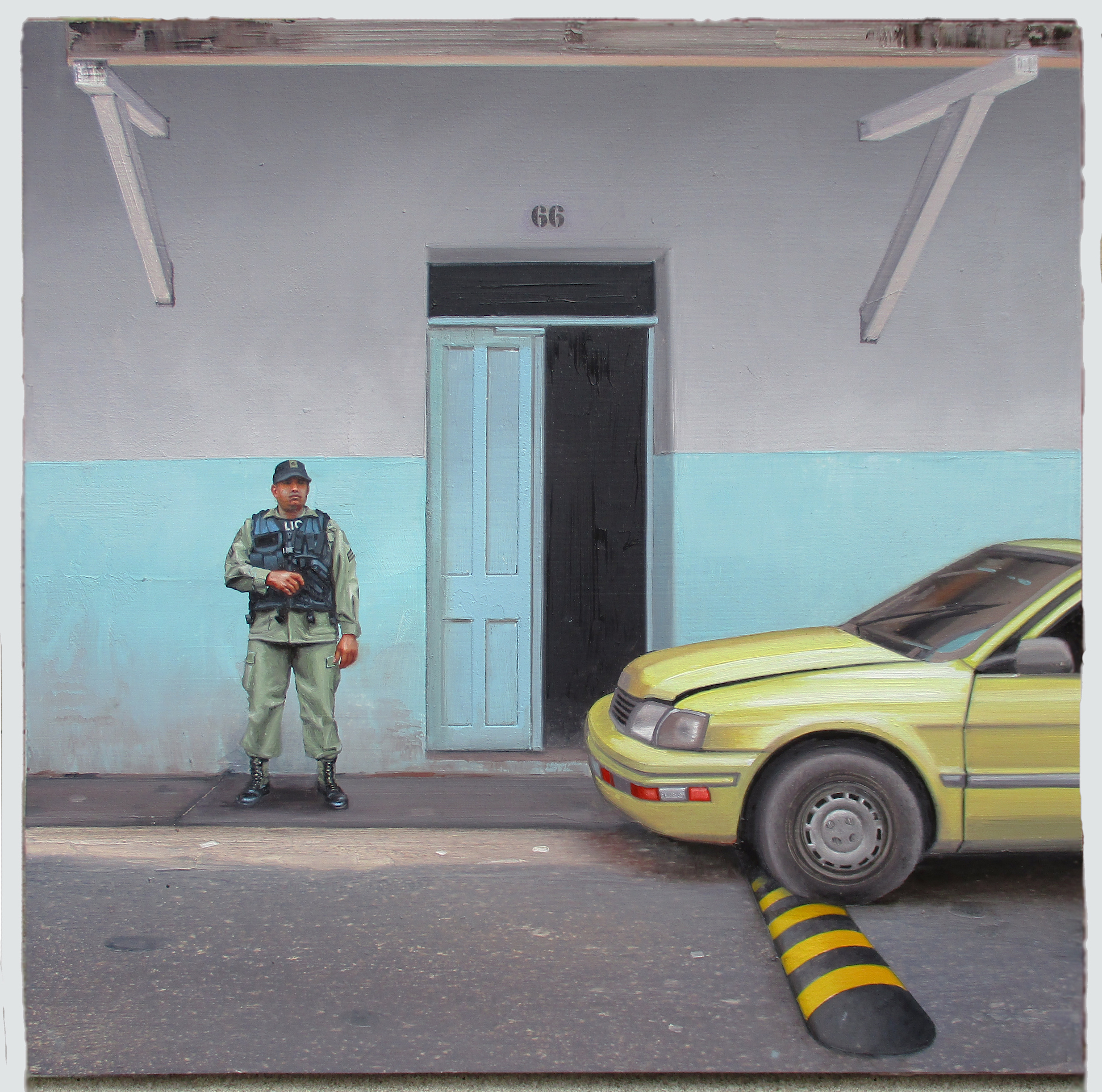
Mel Rosas, El Policía Muerto, Oil on panel, 12 x 12 inches, 2016
Learning on another trip down south that the Panamanian term for speed bumps is “dead policemen,” Rosas knew that, by hook or by crook, he had to work that into a painting somehow. The result is El Policía Muerto from 2016, which in many ways hits the political reality in some countries harder than the other paintings here, with its portrait of a heavily armed and flak-jacketed member of the Guardia Civil standing guard by a doorway near a car parked just short of a speed bump. Once again, the color is well curated. The wall behind the soldier is a fading turquoise, while the car – with a hood that doesn’t quite close – is an off-putting shade of dull, lemon yellow. It’s a brilliant choice for a work with undercurrents of politics and fear. The tension set up between the turquoise and the ugly yellow knocks the whole painting slightly off-kilter, which works to great advantage.
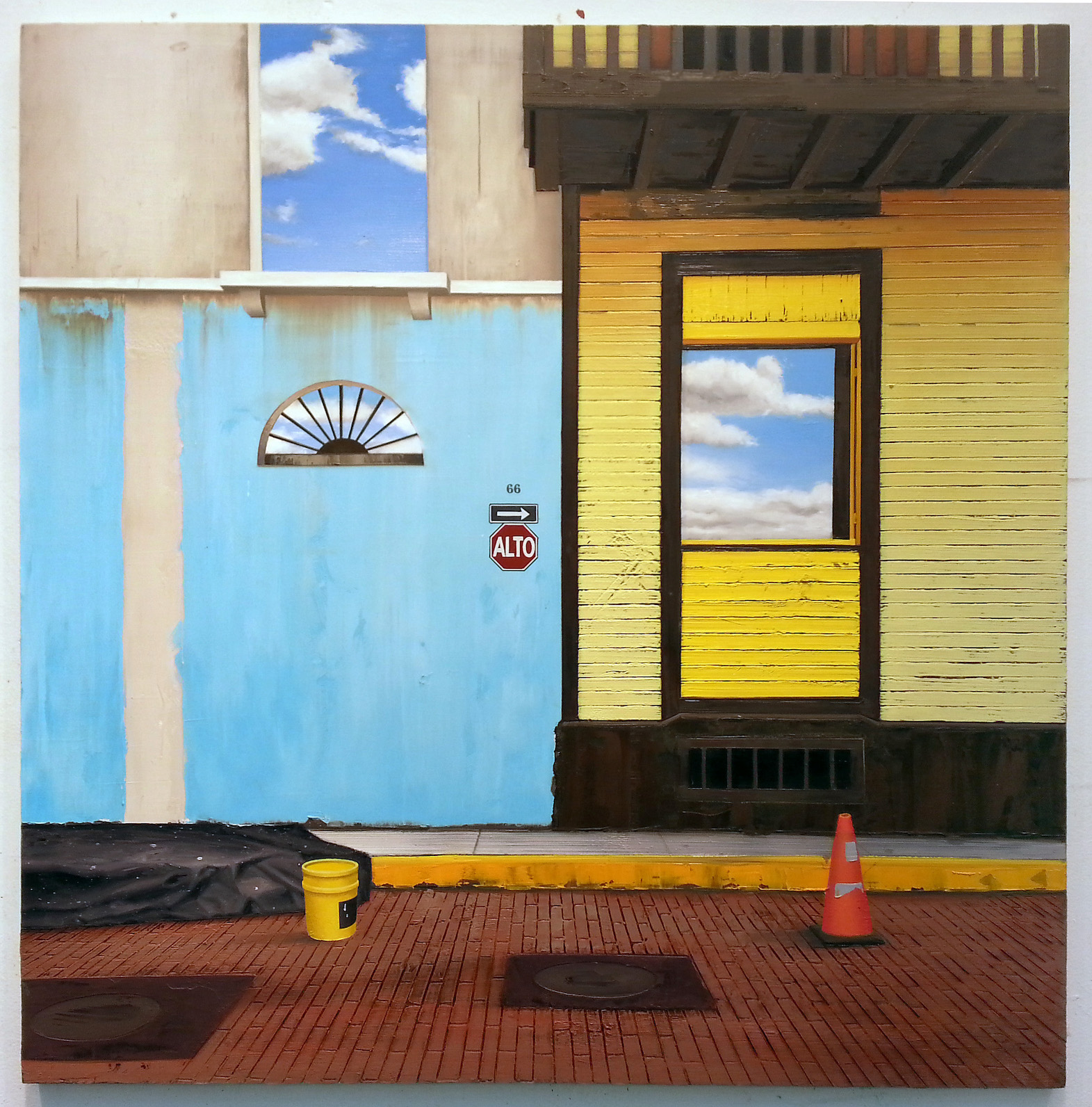
Mel Rosas, La Gentrificación, Oil on panel, 36 by 36 inches, 2016.
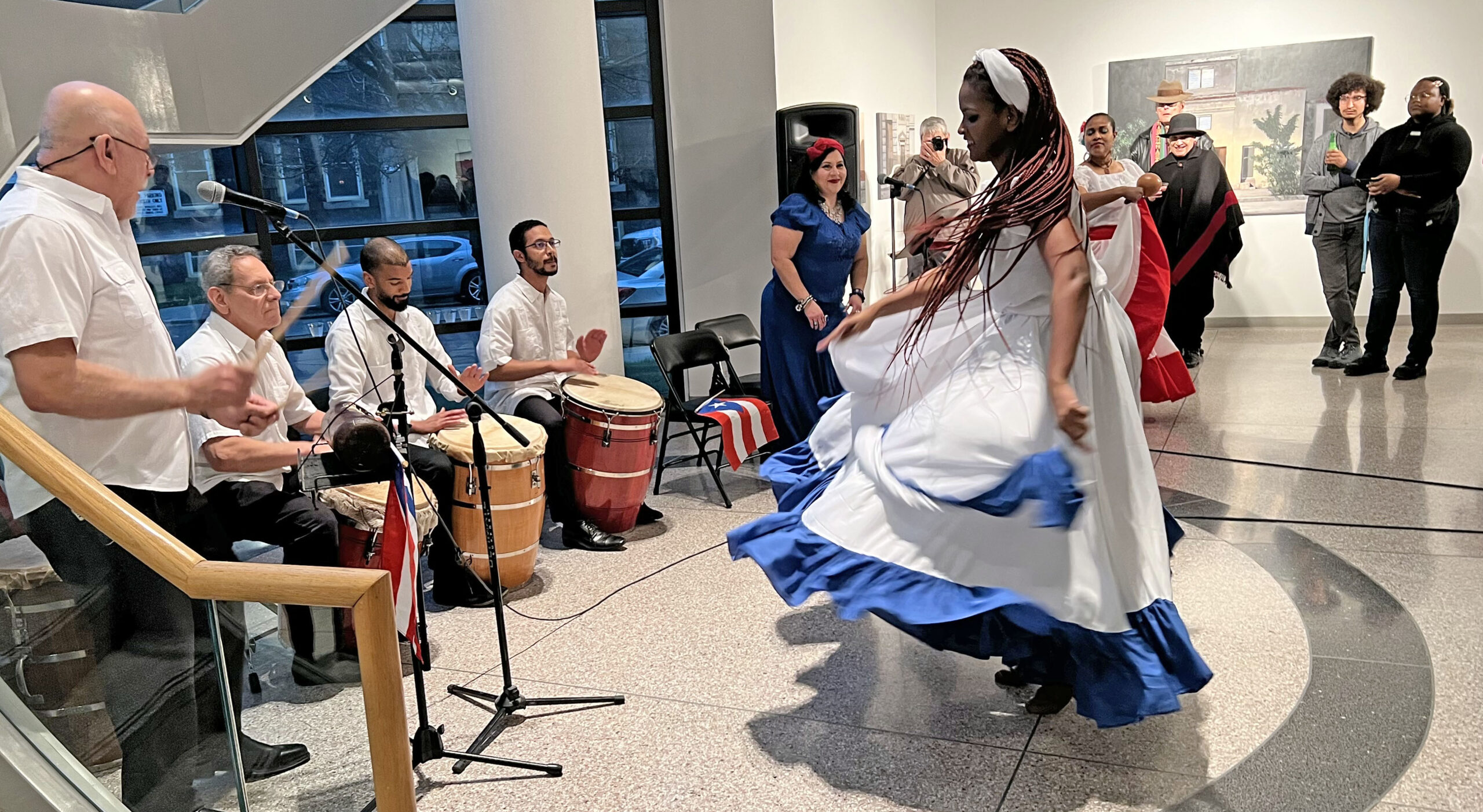
Installation image, Latin percussion with dancers at the opening. 2023 Courtesy of DAR.
“Foreign Intimacies” by Mel Rosas will be at the Elaine L. Jacob Gallery on the Wayne State University campus through June 2.
